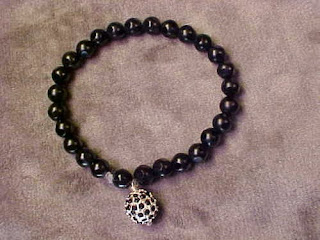Beads have been used for religious purposes and for purposes related to superstition. Although the line between the two can sometimes be fuzzy, I would define religion as a belief in a deity (or deities) to give meaning to our temporary lives in an otherwise chaotic existence. Superstition deals with small disconnected issues. The use of beads in superstition assumes that they have some magical power to ward off evils. Beads in religion are tools to help in communicating with God (or gods). Anyway, beads can be beautiful in their own right, whatever their purpose.
So, having defined religion and superstition as well as I can, let’s go on to some of the history of beads in religion and superstition.
Prayer Beads in Religion
Prayer beads have been used at some time in most of the major religions in the world, including Christianity, Islam, Buddhism, and Hinduism. The English word bead comes from the Anglo-Saxon word bede which means prayer. In Islam beads are used in a string of 99 to count the attributes of God. In Hinduism and Buddhism the type of bead used is more important than the number. In Catholicicsm beads are strung in Rosary which represents a religious garden.
Beads in Superstition:
Evil Eye
Probably, the most widespread superstitious bead with a long history is the Evil Eye. This type of bead dates back to prehistoric times and has been found particularly in ancient Egypt, ancient Greece, Asia Minor, the Middle East, and Europe. The concept is that someone can cause you harm by giving you the Evil Eye. Beads shaped and colored to look like an eye were made to ward off this evil.
Ancient Egypt
In ancient Egypt heart shaped beads were believed to promote health. They were also often buried with the dead to continue good health into the afterlife. Another ancient Egyptian bead called the menat was believed to protect women and bring them love. A lotus shaped bead was believed to give intelligence, and a fish bead was believed to ward off evil. Eye shaped beads to fight the Evil Eye were typically blue in color.
Other Ancient Civilizations
The Romans believed amber beads could ward off illnesses. A ram shaped bead was believed by some Middle Eastern civilizations to give strength.
Adder Beads
Adder beads were beads made of a glass-like material found in Britain since ancient times. The peasants believed that they were made by adders (poisonous snakes). They were believed to cure various ills in people and livestock as well as to help with difficult pregnancies
You can see modern day handcrafted glass beads at
BEADSHAPER


















